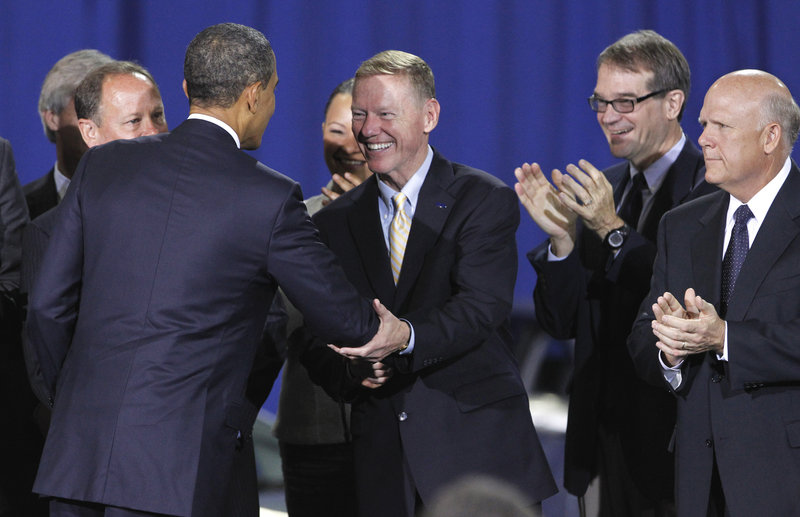WASHINGTON – President Barack Obama and automakers ushered in the largest cut in fuel consumption since the 1970s on Friday with a deal that will save drivers money at the pump and dramatically cut heat-trapping gases coming from tailpipes.
The agreement pledges to double overall fuel economy to 54.5 mpg by 2025, bringing even greater under-the-hood changes to the nation’s autos starting in model year 2017 and introduce more electric and hybrid technology to pickup trucks. Cars and trucks on the road today average 27 mpg.
“This agreement on fuel standards represents the single most important step we have taken as a nation to reduce our dependence on foreign oil,” Obama said, sharing the stage with top executives of 11 major automakers and a top automobile workers union official, before a backdrop of some of the most cutting-edge cars and pickup trucks on the road.
“Just as cars will go further on a gallon of gas, our economy will go further on a barrel of oil,” Obama said.
When achieved, the 54.5 mpg target will reduce U.S. oil consumption from vehicles by 40 percent and halve the amount of greenhouse gas pollution coming out of tailpipes. It builds on a 2009 deal between the Obama administration and automakers, which committed cars and trucks to averaging 35.5 mpg by model year 2016.
For American families, the president said the agreement — which will be subject to a midcourse review — means filling up the car every two weeks, instead of every week. That would save $8,000 in fuel costs over the life of a vehicle purchased in 2025, compared to a 2010 model, a White House analysis said.
The changes also are likely to push up the cost of a new vehicle, but just how much is unclear because the regulation still has to be written. That process will get started in September.
The mileage target announced Friday isn’t exactly what consumers will see in their future cars. A formula that gives credits to manufacturers for electric cars, the use of low-emission air conditioning refrigerant and technology that shuts down engines at traffic lights means the actual fuel economy is likely to come in closer to about 40 mpg. Stickers on future cars and trucks will also display different numbers because they’ll be based on real-world mileage tests.
The deal was less than what environmentalists and public health advocates wanted but more than desired by the Detroit Three — General Motors, Ford and Chrysler. In a letter to the president last week, Michigan lawmakers called the White House’s initial proposal of 56.2 mpg “overly aggressive,” after automakers had said they’d work to get vehicles averaging 42.6 to 46.7 mpg. Green groups, meanwhile, had pushed for a 62 mpg target by 2025.
The deal also provides an answer to critics who say the president has not done enough to address high gasoline prices.
It promises to reduce demand at a time when Republicans in Congress have criticized Obama for being too slow to drill and not opening up more areas to oil and gas exploration after the massive Gulf oil spill last year.
Copy the Story Link
Send questions/comments to the editors.



Success. Please wait for the page to reload. If the page does not reload within 5 seconds, please refresh the page.
Enter your email and password to access comments.
Hi, to comment on stories you must . This profile is in addition to your subscription and website login.
Already have a commenting profile? .
Invalid username/password.
Please check your email to confirm and complete your registration.
Only subscribers are eligible to post comments. Please subscribe or login first for digital access. Here’s why.
Use the form below to reset your password. When you've submitted your account email, we will send an email with a reset code.